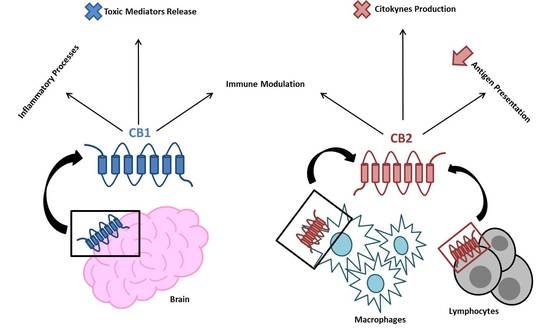 “Epilepsy is a neurological disorder that affects approximately 50 million people worldwide.
“Epilepsy is a neurological disorder that affects approximately 50 million people worldwide.
There is currently no definitive epilepsy cure. However, in recent years, medicinal cannabis has been successfully trialed as an effective treatment for managing epileptic symptoms, but whose mechanisms of action are largely unknown.
Lately, there has been a focus on neuroinflammation as an important factor in the pathology of many epileptic disorders. In this literature review, we consider the links that have been identified between epilepsy, neuroinflammation, the endocannabinoid system (ECS), and how cannabinoids may be potent alternatives to more conventional pharmacological therapies.
We review the research that demonstrates how the ECS can contribute to neuroinflammation, and could therefore be modulated by cannabinoids to potentially reduce the incidence and severity of seizures. In particular, the cannabinoid cannabidiol has been reported to have anti-convulsant and anti-inflammatory properties, and it shows promise for epilepsy treatment.
There are a multitude of signaling pathways that involve endocannabinoids, eicosanoids, and associated receptors by which cannabinoids could potentially exert their therapeutic effects. Further research is needed to better characterize these pathways, and consequently improve the application and regulation of medicinal cannabis.”

 “Chronic cerebral hypoperfusion (CCH) is a major contributor to cognitive decline and degenerative processes leading to Alzheimer’s disease, vascular dementia, and aging. However, the delicate mechanism of CCH-induced neuronal damage, and therefore proper treatment, remains unclear.
“Chronic cerebral hypoperfusion (CCH) is a major contributor to cognitive decline and degenerative processes leading to Alzheimer’s disease, vascular dementia, and aging. However, the delicate mechanism of CCH-induced neuronal damage, and therefore proper treatment, remains unclear.
 “Endometriosis affects a large proportion of women during their reproductive years and is associated with pain and infertility, also affecting psychological wellbeing and quality of life. The pathogenesis of the disease remains unclear, although it is believed to be multifactorial.
“Endometriosis affects a large proportion of women during their reproductive years and is associated with pain and infertility, also affecting psychological wellbeing and quality of life. The pathogenesis of the disease remains unclear, although it is believed to be multifactorial. “Available data support the notion that
“Available data support the notion that  “In Italy, medical grade cannabis (MGC) can be prescribed for different medical conditions, including drug-resistant epilepsy (DRE), once standard and approved therapies have failed, or caused non-tolerable side effects.
“In Italy, medical grade cannabis (MGC) can be prescribed for different medical conditions, including drug-resistant epilepsy (DRE), once standard and approved therapies have failed, or caused non-tolerable side effects. “Endocannabinoid system consists of
“Endocannabinoid system consists of 
 “As we learn more about the endocannabinoid system (ECS), our understanding and grasp of the system’s ubiquitous presence is expanding. In light of this, there is also a growing body of evidence for the therapeutic potential of ECS modulation in a range of clinical situations. Strategies include for example manipulation of the
“As we learn more about the endocannabinoid system (ECS), our understanding and grasp of the system’s ubiquitous presence is expanding. In light of this, there is also a growing body of evidence for the therapeutic potential of ECS modulation in a range of clinical situations. Strategies include for example manipulation of the  “Hepatorenal syndrome (HRS) is a life-threatening complication of end-stage liver disease characterized by the rapid decline of kidney function. Herein, we explored the therapeutic potential of targeting the
“Hepatorenal syndrome (HRS) is a life-threatening complication of end-stage liver disease characterized by the rapid decline of kidney function. Herein, we explored the therapeutic potential of targeting the 